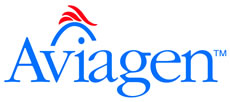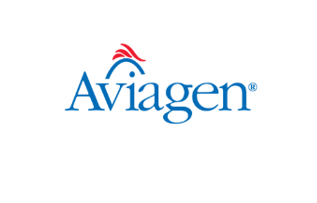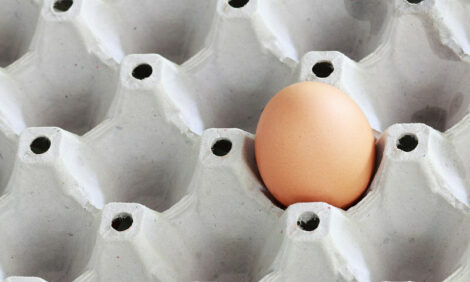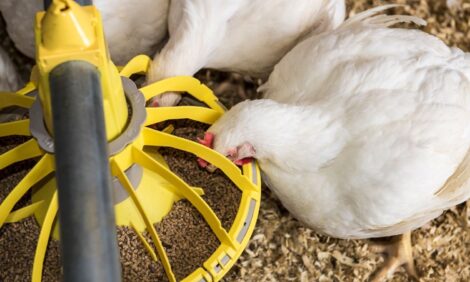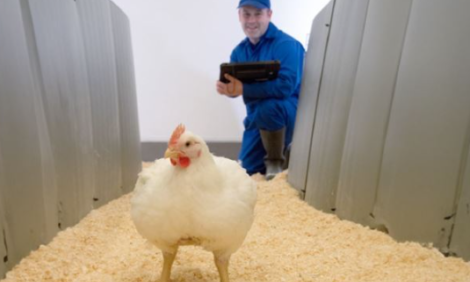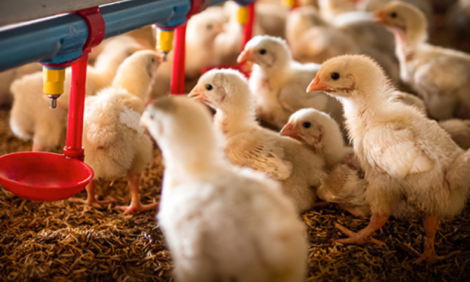



Aviagen Group's Decades of Breeding for Welfare & Sustainability
Learn about Aviagen Group's core principles of breedingPart of Series:
Next Article in Series >
Editor's note: This article is an excerpt from the Aviagen Group's Decades of Breeding for Welfare & Sustainability Report and additional articles will follow. The Report is designed to demonstrate Aviagen's commitment to genetic improvement of welfare and sustainability of broiler and turkey breeds. Plus, it covers much more like techniques to ensure robustness and new methods to improve selection and genetic progress. To read or download the complete report, click here.
Overview of Breeding
Aviagen has the responsibility of managing the world's major broiler and turkey breeding programs. The breeding decisions are important for determining the characteristics of the breeds used by today's farmers. Operating for over 60 years, these programs have a long history of developing and selecting for a diverse range of welfare and sustainability traits.
Aviagen operates multiple breeding programs for each species. These programs are the start of the supply chain for poultry producers worldwide. Each program consists of multiple lines of pedigree birds measured under controlled conditions to replicate the growing and reproduction life stages used in poultry production.
The breeding goal is developed by translating requirements from industry and societal stakeholders into measurable traits on individual birds. Pedigree lines are selected for a broad range of traits and offspring are multiplied and crossed over several generations. The balance of selection traits in each line differs depending on the intended use of the final cross.
From pedigree selection through to the final generation grown by farmers takes around 4 years. It is evident that breeding companies therefore need to carefully anticipate the direction of stakeholder requirements in order to satisfy future requirements.
Figure 1 shows the pedigree section of the breeding program, where the selection takes place, and the multiplication generations.
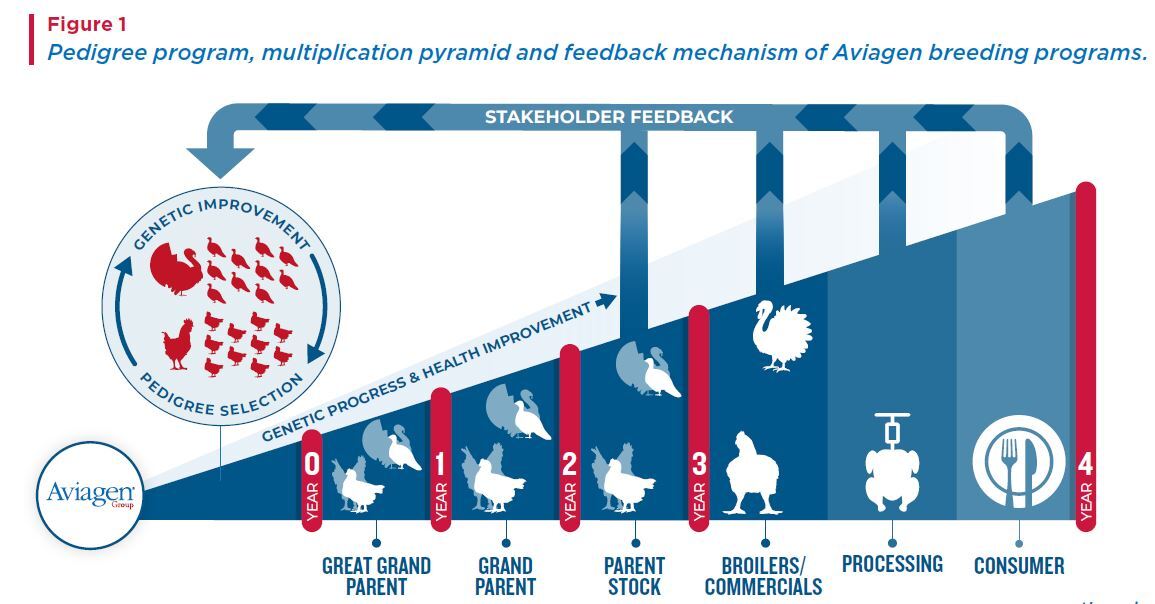
Whilst consumer preferences are evolving to an increasing awareness of welfare and sustainability of food production, arguably, long-term breeding targets for improving economic efficiency are closely aligned to these goals. For many years, Aviagen has focused on minimizing inputs of feed, water, litter and antibiotics and maximizing meat produced through a balance of welfare, weight, yield, and better livability.
This paper will demonstrate the decades long commitment of Aviagen to the genetic improvement of welfare and sustainability of broiler and turkey breeds.
It will also cover the techniques used to ensure robustness and optimal welfare under a wide range of production conditions, as well as new methods to improve the accuracy of our selection and further drive genetic progress for better welfare and sustainability outcomes.
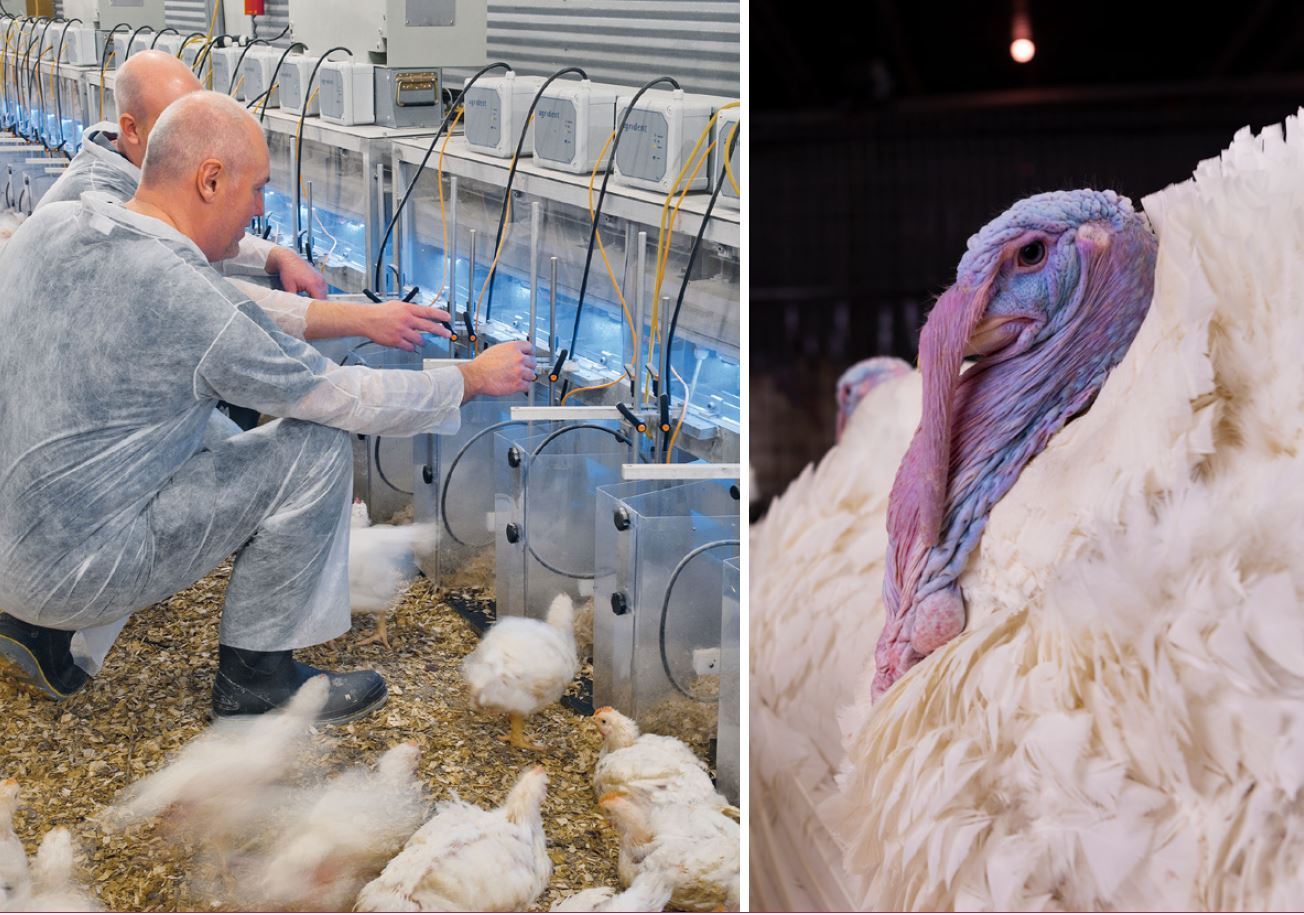
Core Principles of Breeding
Within our breeding programs, we record large amounts of data on each bird; for example, bodyweight, feed conversion efficiency (FCR), physical leg assessment and gait score. We combine these carefully recorded measures with the birds' pedigree (a record of how each individual is related to each other individual).
By combining physical measurements with family information, we can create a very clear picture of which birds and which families within our populations have the best genetic potential. These are the families that we breed so that those genes contribute to the next generation and drive the progress of the commercial bird. In each of our breeding programs, this family information is extensive; for example, our broiler pedigree goes back to 1979. The same principle applies to all other traits. In each of our breeding programs, this family information is extensive. Aviagen takes a balanced breeding approach to selecting its birds for many different traits at the same time. Many selection traits are correlated with each other (Figure 2). Selection of some traits may impact positively or negatively on the development of other traits.
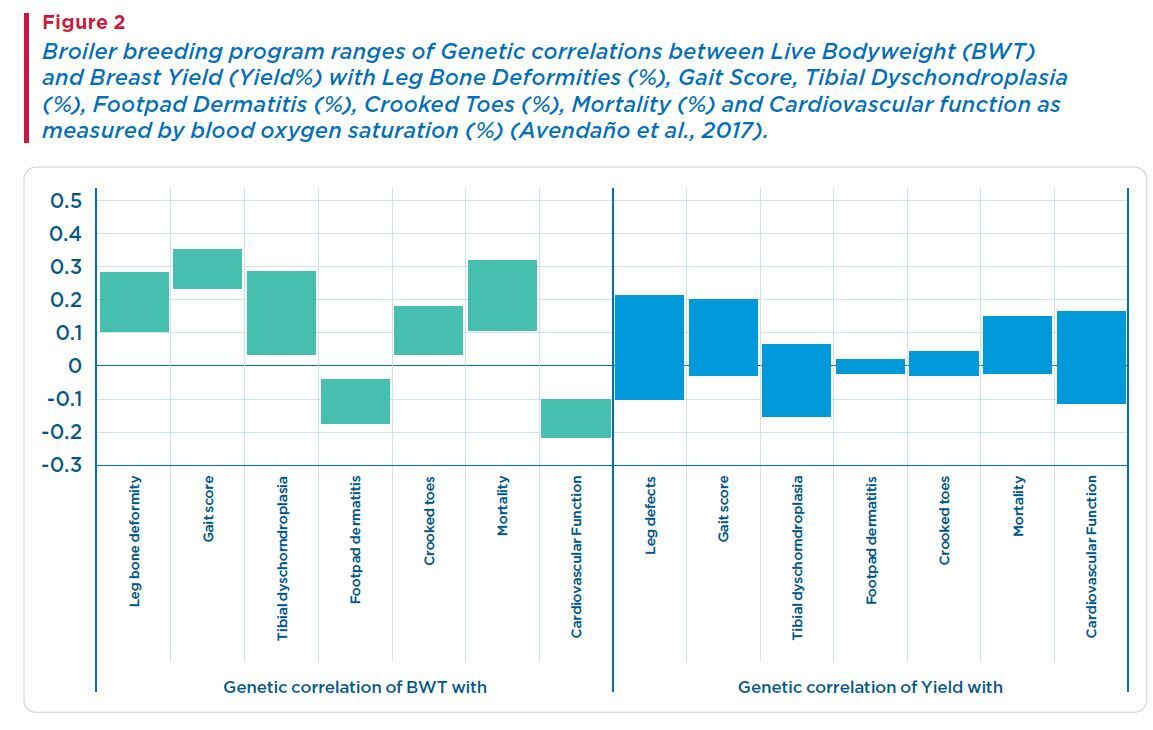
A negative relationship - antagonism between traits - is regularly observed between production or environmental impact traits and health, welfare or reproduction traits. This means an improvement in one trait needs to be considered in the context of its effect on other traits.
Such antagonisms are handled, by simultaneously considering multiple traits in the breeding goal and selecting birds which have better than average breeding values than the population average. Amongst the many pedigree candidates there are always a few which are good at both traits in a certain antagonism - these birds are then selected.
Step by step then both traits will improve. This approach of balanced breeding has been used for many years in the broiler and turkey breeding programs at Aviagen.
Sustainable breeding requires a secure breeding program structure and a diverse range of genotypes to cater for current and future industry needs. The broiler and turkey breeding programs share similar, proven structural features for genetic security: high biosecurity facilities with replicated populations spread geographically and at different ages. As an illustration, Aviagen and Aviagen Turkeys each have pedigree operations based in the USA and UK. Within each location, there are various rearing and laying farms housing the pedigree lines.
In the breeding programs, the source of the genetic progress comes from a wide range of pedigree lines (Figure 3) with more than 30 in broilers and over 40 in turkeys (Defra, 2010).
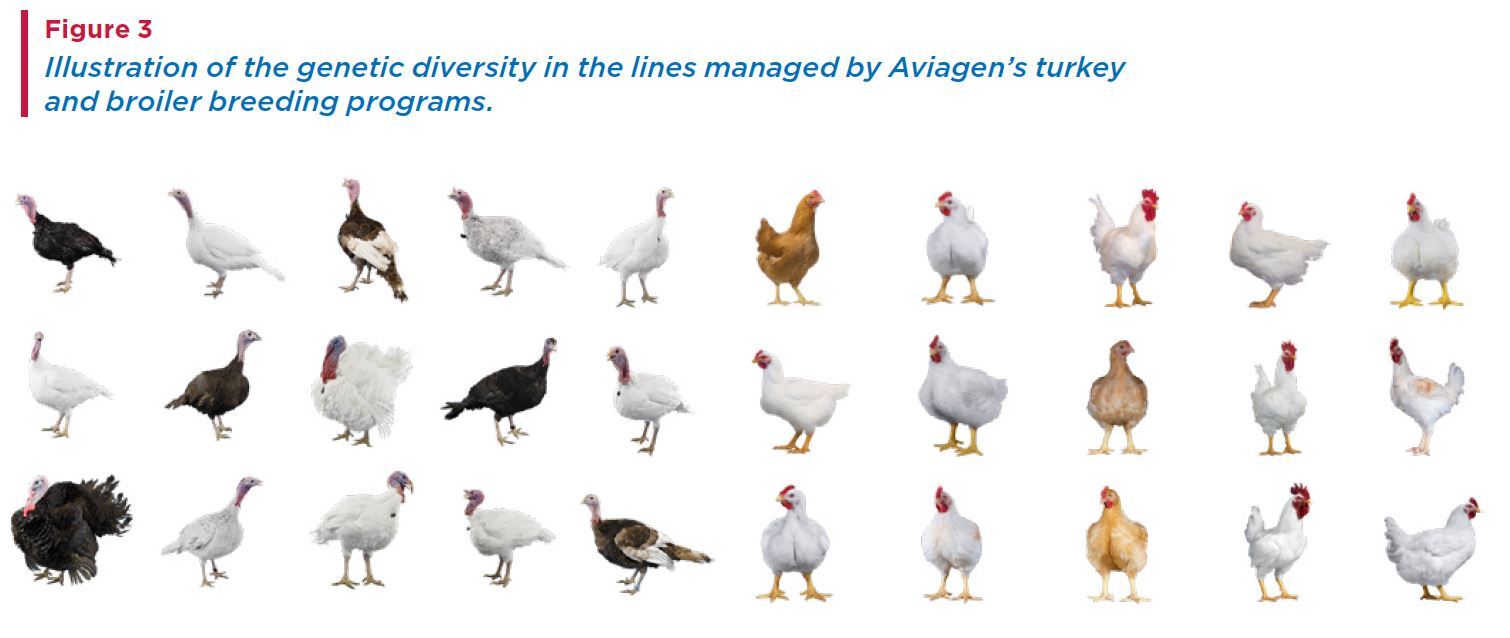
A high selection pressure is applied for a broad range of traits. The individual lines, each with clearly defined selection objectives, are then combined to give parents and finally commercial birds. Aviagen's diverse breed range consists of cross-bred birds, typically made up of four different types of pedigree lines. The diversity of lines gives a large range of opportunities to create novel crosses to satisfy future market needs.
To read or download the complete report, click here.







